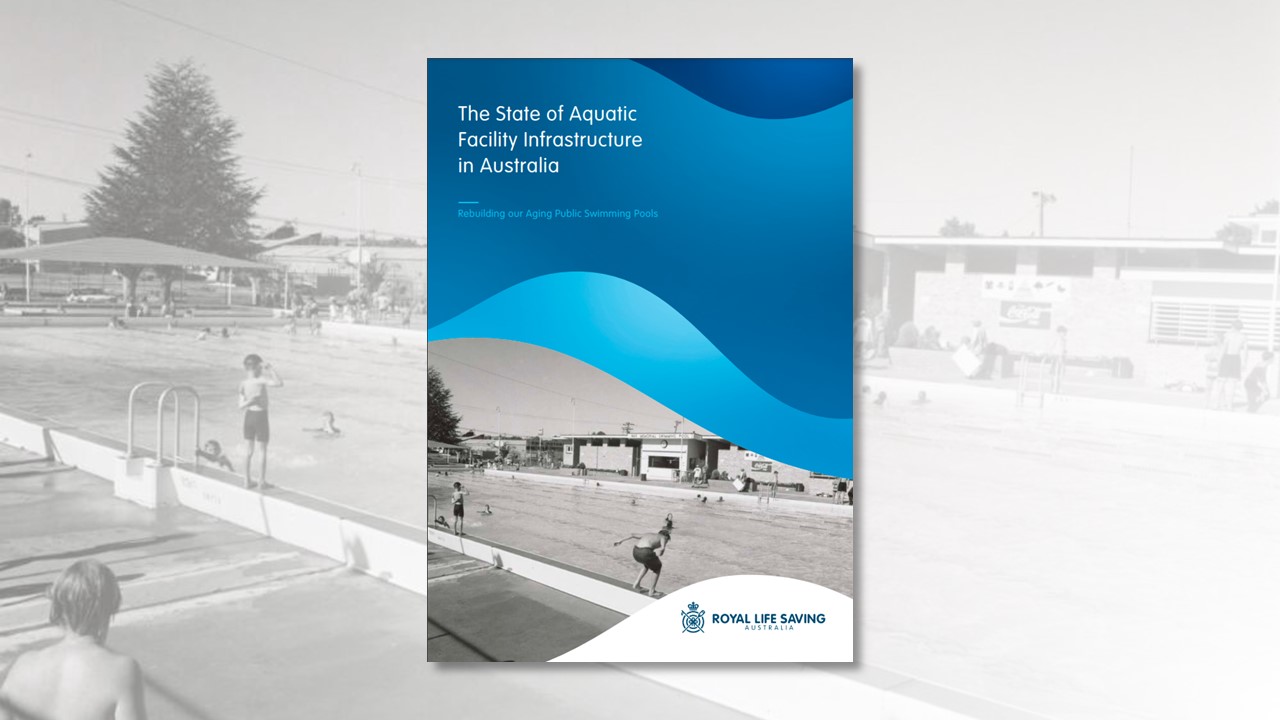Published 2 November 2022

A new Royal Life Saving Society – Australia report has found that in the next 10 years, up to 40 per cent of public aquatic facilities that local governments own are likely to need serious refurbishment or outright replacement at a cost of more than $8 billion.
The State of Aquatic Facility Infrastructure in Australia – Rebuilding our Aging Public Swimming Pools found that significant investment is required to replace, renew or upgrade pools nearing the end of their useful life.
Aquatic facilities are essential for the provision of learn-to-swim, water therapy, leisure, physical activity and swimming, which are activities that over 5 million Australians regularly attend. They are an essential service for communities.
The research found that:
- The average life expectancy of a pool is 50 years
- The average Australian public pool was built in 1968
- 500 (40%) of public pools will reach the end of their functional lifespan by 2030
- $8 billion is needed to replace those 500 aging public pools
- A further $3 billion will be needed to replace facilities ending their lifespan by 2035
The social health and economic cost of not replacing even 10 per cent of aquatic facilities by the end of this decade could approach $1 billion per year according to multipliers from previous research by PricewaterhouseCoopers and Royal Life Saving.
Royal Life Saving National Manager – Aquatics, RJ Houston said that while the health, social and economic benefits of swimming pools are now very clear, sadly some community pools are were no longer operational or safe to remain open.
“Even a basic outdoor swimming pool can cost $10 million to replace in 2022 due to rising costs of labour and materials,” said Mr Houston.
“Local governments are the primary funder of aquatic facilities and are under extraordinary budgetary pressure currently, so the way in which public pools are funded and maintained needs re-examined systematically and across all layers of government.
“Regional and inland communities are the most affected. Most coastal communities and city areas benefit from strong public and private aquatic infrastructure, as well as social infrastructure like lifesaving clubs and patrolled beaches.
“Many regional councils struggle to afford to maintain or replace swimming pools, and increasingly councils are considering closing their pools.”
This report comes after a 25-year high in the Royal Life Saving National Drowning Toll with 339 people losing their lives to drowning last financial year.
“In light of the historically high drowning deaths, the generation of kids at risk of missing out on swimming, and water safety and this new research about the state of aquatic facility infrastructure, it really is a perfect storm,” Mr Houston said.
It is unlikely that a straight 'like-for-like' replacement of all aging aquatic facilities will or should take place.
The report includes recommendations to rethink the approach to the provision of aquatic facilities to ensure that the community can continue to access these into the future.
As well as boosting funding, state and federal governments need to review how funds are allocated to ensure equitable and universal access to community pools across Australia.
To view the full report click here.
Royal Life Saving Society – Australia’s research, education and advocacy work in drowning prevention and water safety is supported by the Australian Government.
